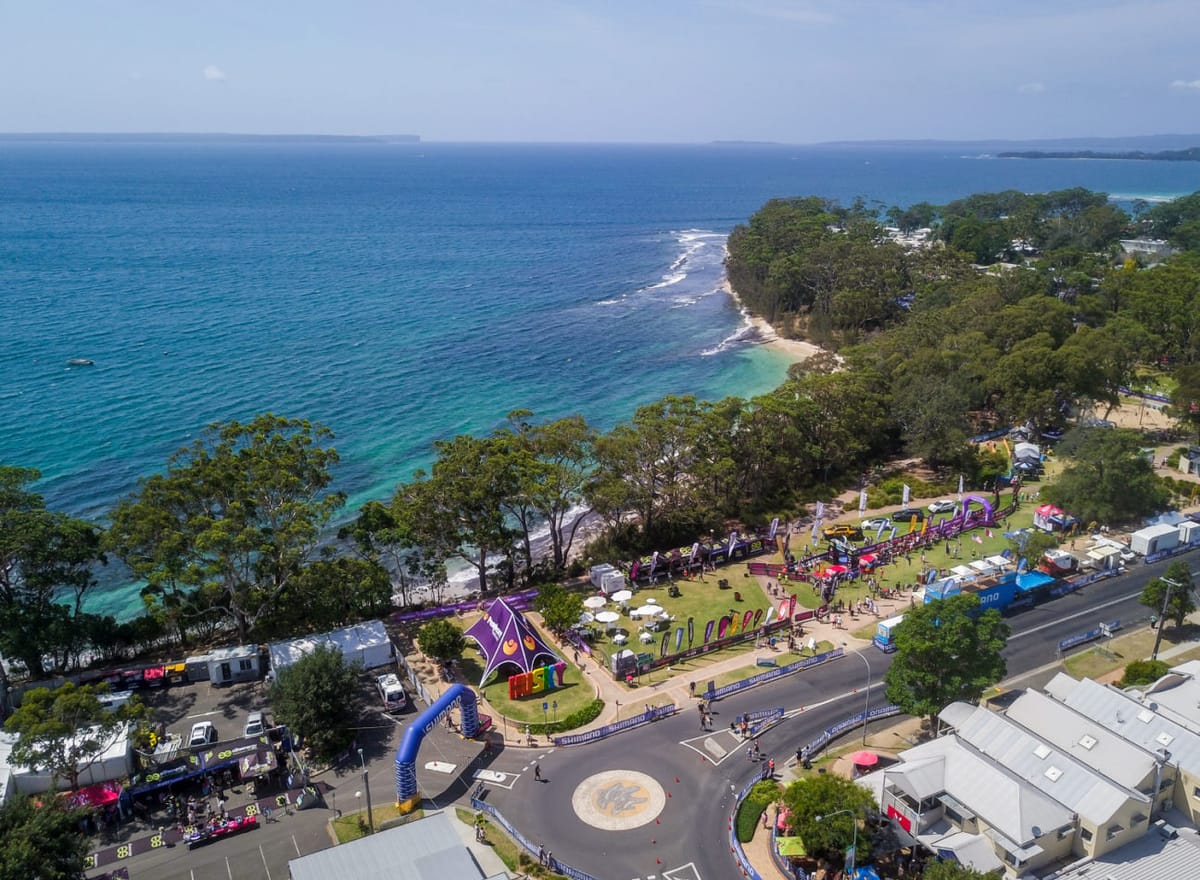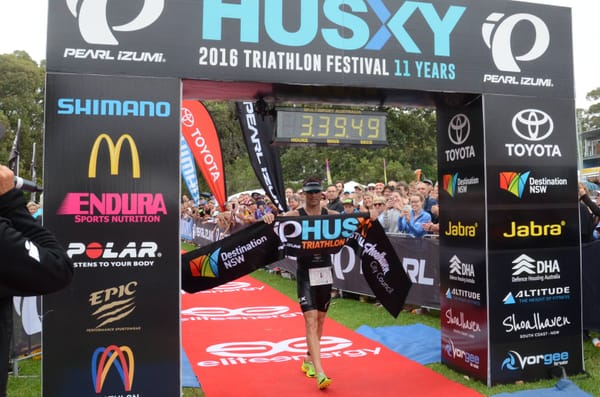The Huskisson Triathlon Festival, usually referred to as just Husky, is a perfect race for those looking to get a little speed work into their routine. Also, the festival is one of the best weekends on the Aussie tri calendar.
As a seasoned triathlon coach, I've had the privilege of guiding athletes through the rigours of this event. This year, we aimed to blend long-course endurance with short-course speed, pushing the limits of performance.

Pre-Race
Training for Specific Conditions
In preparation, we tailored our training to mimic the race's unique aspects, such as practicing in similar ocean conditions and simulating the course's elevation changes. This helped our athletes acclimate to the specific challenges they would face.
Environmental Considerations
The temperate and variable weather of Huskisson were key considerations. We focused on strategies for both warm and cooler conditions, ensuring our athletes were prepared for any weather scenario.
Mental Conditioning
We also emphasised mental toughness, simulating race conditions in training to prepare for the psychological battles of race day. This included visualisation techniques and resilience-building exercises.

Part 1: The Swim
The Sprint's Ocean Challenge
The swim in Jervis Bay, with its clear but often choppy waters, tested our athletes' open water skills. We emphasised navigation techniques and adapting to the unpredictability of ocean swimming.
For the longer Ultimate Race, endurance and pacing were critical. The extended distance required a balance between maintaining speed and conserving energy for the later stages.
Athlete A's Challenge
In the Sprint, the non-wetsuit swim presented a tactical challenge. Our athlete, leveraging an Xterra Speed Suit for buoyancy, struggled initially with the choppy conditions. Their journey from discomfort to finding a rhythm is a testament to mental fortitude and the importance of adaptability in open water.
Athlete B's Strategy
For the Ultimate Race, another athlete executed a well-planned swim strategy. Sticking with a known fast swimmer was a calculated risk that paid off, despite the crowded field. This highlights the importance of drafting and situational awareness in swimming.
Part 2: The Bike
The bike course in the Sprint race, known for its quick turns and short hills, demanded agility and power. We focused on interval training to build the explosive strength needed for this dynamic course.
The longer course of the Ultimate Race offered a mix of flats and hills, with stunning coastal views. Training included long, steady rides to build endurance, interspersed with hill repeats for strength.
Overcoming Technical Difficulties
The bike segment is where equipment choices come into play significantly. Athlete A's new Giant Trinity, optimised for aerodynamics, was a game-changer. However, technical adjustments and familiarity with new equipment are crucial, as evidenced by their experience.
Athlete B's Lonely Ride
In the Ultimate Race, the lone ride against high humidity and visibility issues was a bit of a battle - including whits. The athlete's decision to wipe the visor clear mid-race as well as ensuring cornering was slower than normal (better to be safe than sorry!) added to the little things that they had to work through.
Part 3: The Run
The Sprint's run, a short but intense segment, required athletes to quickly transition from cycling to running. We practiced brick workouts extensively to improve this transition.
The half-marathon in the Ultimate Race was a true test of endurance. The course, with its undulating profile, required a strategic approach to pacing and energy management.
Sprinting to Victory
Athlete A's transition to the run was marked by a blend of optimism and reality. The speed work paid off, but not without struggle. Winning their age group was a mix of preparation and in-the-moment adjustments - nothing stood in their way.
Endurance and Tactics
In the Ultimate Race, the run was a strategic masterpiece. Our athlete's ability to maintain a steady pace, adjust strategies on the fly, and mentally push through barriers showcases the epitome of endurance racing - something I really love.
Nutrition and Hydration
The Role of Fuelling
A significant part of our preparation involves nutrition and hydration strategies. Tailoring intake to each athlete's needs and the race conditions is a science in itself. In-race nutrition, particularly in long-course events, can make or break a performance.
Personalised Strategies
Each athlete had a customised plan, focusing on carbohydrate intake, electrolyte balance, and hydration. The effectiveness of these plans was evident in their sustained energy levels and lack of significant gastrointestinal issues.
Equipment and Technology
The Importance of the Right Gear
Choosing the right equipment, from wetsuits to bikes to running shoes, is a critical aspect of race preparation. We spent considerable time testing and selecting gear that complements each athlete's style and the race conditions.
Psychological Aspects
Building a Resilient Mindset
Triathlon is as much a mental challenge as it is physical. We focused on building mental resilience, teaching athletes to cope with discomfort, maintain focus, and stay motivated under pressure.
Race Day Psychology
The ability to stay calm, adapt to changing race dynamics, and push through tough moments was key to our athletes' success. Encouraging a positive internal dialogue and focusing on controllable elements were part of our psychological toolkit.
Conclusion
Lessons Learned
The unique features of the Huskisson Triathlon - from its coastal swim to the varied bike and run courses - offered valuable lessons in adaptability and strategy. Understanding and preparing for these specifics was key to our success.
Looking Ahead
Armed with the experience and learnings from Huskisson, our focus shifts to future races. Each event's unique characteristics will continue to shape our training and racing strategies, driving us towards greater achievements in the future.

